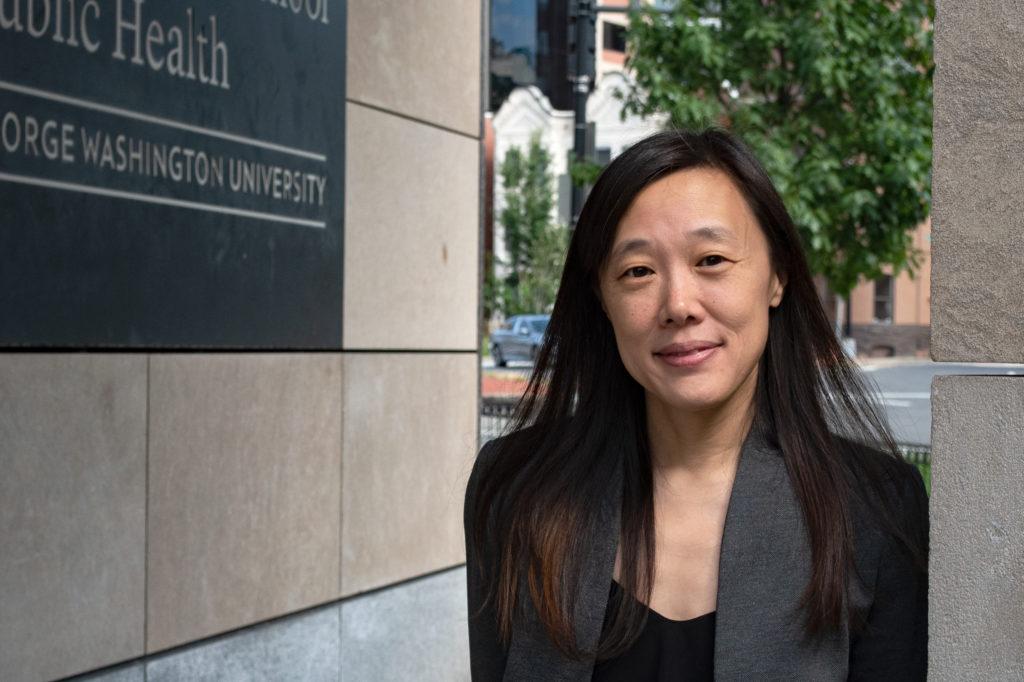Researchers at the Milken Institute School of Public Health published an online interactive map earlier this month to measure the accessibility of contraceptive care service providers throughout the country.
The U.S. Contraception Workforce Tracker – an online map released by the Fitzhugh Mullan Institute for Health Workforce Equity which studies health care disparities – breaks down the types of contraceptive service providers like gynecologists and nurse midwives on the county and state level. Candice Chen, the project’s lead researcher and an associate professor of health management and policy, said she hopes the map will direct patients to better contraception access and guide policymakers who can address unequal training practices on contraception distribution among health care providers.
“That ability to get down into the county level might help state or local policymakers or educators or communities’ organizations really start to again inform and target different efforts, whether it’s to change policies, whether it’s to invest in programs that will support providers doing more,” Chen said.
Viewers looking to access contraception through the publicly accessible online map can browse through every provider, like physician assistants, within each state and county in the nation. The map also includes the population of reproductive age women in each state and the number of contraceptive providers per 10,000 women of reproductive age.
Chen said the data shows that pediatricians prescribe a much lower quantity of pills, hormonal patches and vaginal rings compared to other health care providers. She said a lack of these prescriptions can reduce pediatric patients’ access to contraception and disadvantage adolescents because of difficulties like unintended pregnancies and unfavorable economic situations.
She said the map is based on her study – published in the American Journal of Obstetrics and Gynecology last month – that found that 73.1 percent of gynecologists prescribe the pill, hormonal patches and vaginal rings, but only 23.4 percent of pediatricians prescribe these same contraceptives. The study considered reproductive age to be between 15 and 44.
“We know that contraception makes a huge difference in people’s lives, that contraception is associated with people being able to make choices about their pregnancy, about things like birth spacing and that it is associated with educational attainment and better economic outcomes for individuals,” Chen said.
Chen said her team of colleagues used data from IQVIA, a proprietary database with information on pharmaceutical claims across the United States, to provide detailed information on the various types of contraceptive care services across the nation.
She said the map shows that the number of contraceptive providers per 10,000 women of reproductive age dips in geographically larger states taxed with higher populations. The map displays 37.16 providers per 10,000 women of reproductive age in New York, 30.15 in Texas and 32.78 in California, among the lowest in the country.
Qian Luo, an assistant research professor of health and policy management who developed the user interface for the online map, said he and Chen hope to update the map yearly as long as they have the necessary funding from their anonymous donor, which allows for continued access to IQVIA’s prescription claims. He said yearly updates can provide greater confidence and statistical support for policymakers involved in expanding sexual and reproductive health services.
“If the funding continues, we will basically renew our subscription to the IQVIA data so that each year we will be able to provide the more up-to-date counts,” Luo said.
Luo said map users can toggle their view between “any population” and the “Medicaid population” so individuals with Medicaid can find contraceptive care services that also are covered under their health insurance plans. He said this feature showcases the same data as the general population setting, but it accounts only for Medicaid users and Medicaid providers.
He said if the map accommodates individuals with different health insurance plans, it can provide insight into low-income communities that don’t have access to all types of health care providers.
“That’s a nice feature, but I just don’t want people to overlook the potential there,” Luo said.
Marybec Griffin, an assistant professor of health behavior, society and policy at Rutgers University, said family medicine and primary care providers on the map should distribute more contraception, so patients don’t have to travel further to visit oncologists and gynecologists.
“It’s really important to include clinical providers that have been traditionally excluded, people like nurses, midwives and pharmacists, and really bring them in and tap into this existing workforce that already is in place that could absolutely be beneficial to reducing the burden on providers but also improving access,” Griffin said.
Griffin said local and state policies should focus on providing contraceptive coverage under insurance plans given recent legislation restricting reproductive health.
A Texas law banning most abortions after six weeks of pregnancy went into effect earlier this month. More than 80 abortion restrictions have been enacted this year in more than a dozen other states.
Griffin said local departments of education and school boards should commit to providing comprehensive sexual education to ensure greater awareness of the contraceptive methods on the map and more information on how to access them.
“Right now, we see a real limitation with abortion access and as that, unfortunately, is moving in the direction that it is, I think then contraceptive access will be next,” she said. “I think it’s also about educating people of reproductive age to know more about what contraception is and that it’s more than just the pill.”








